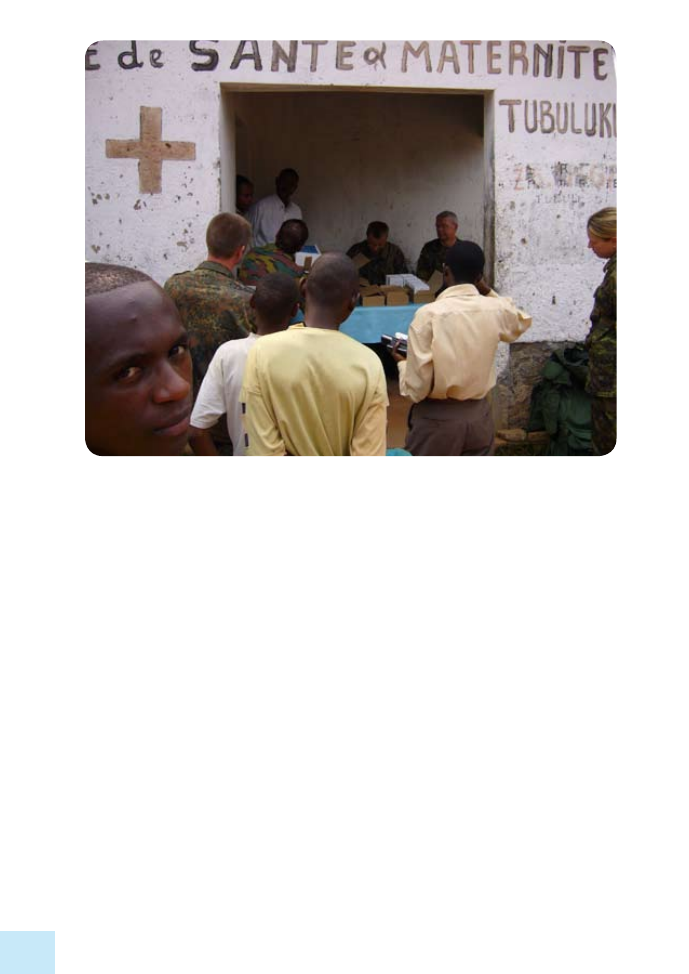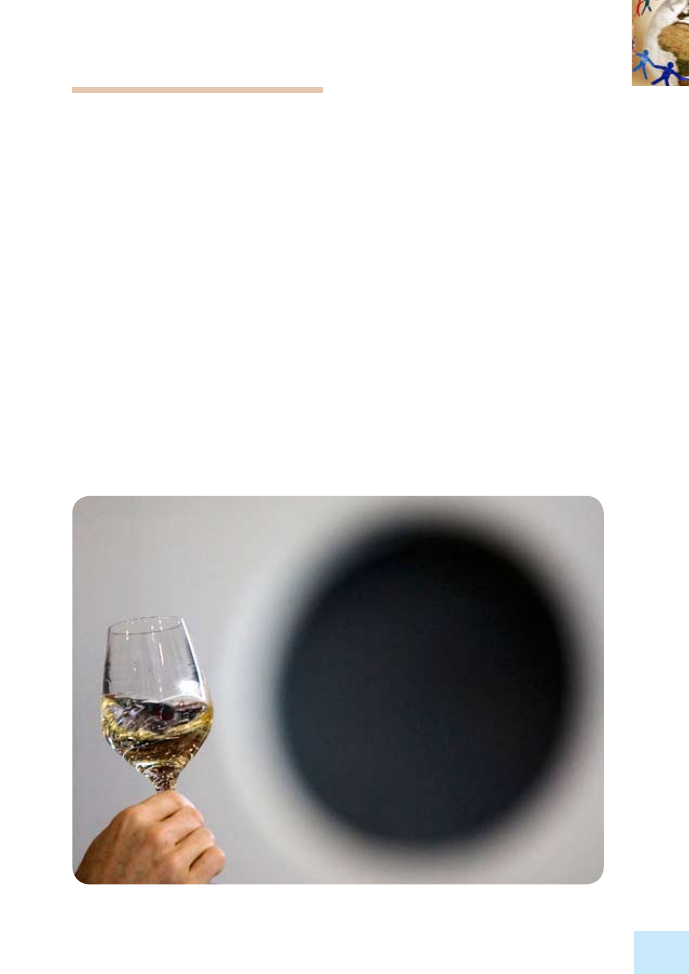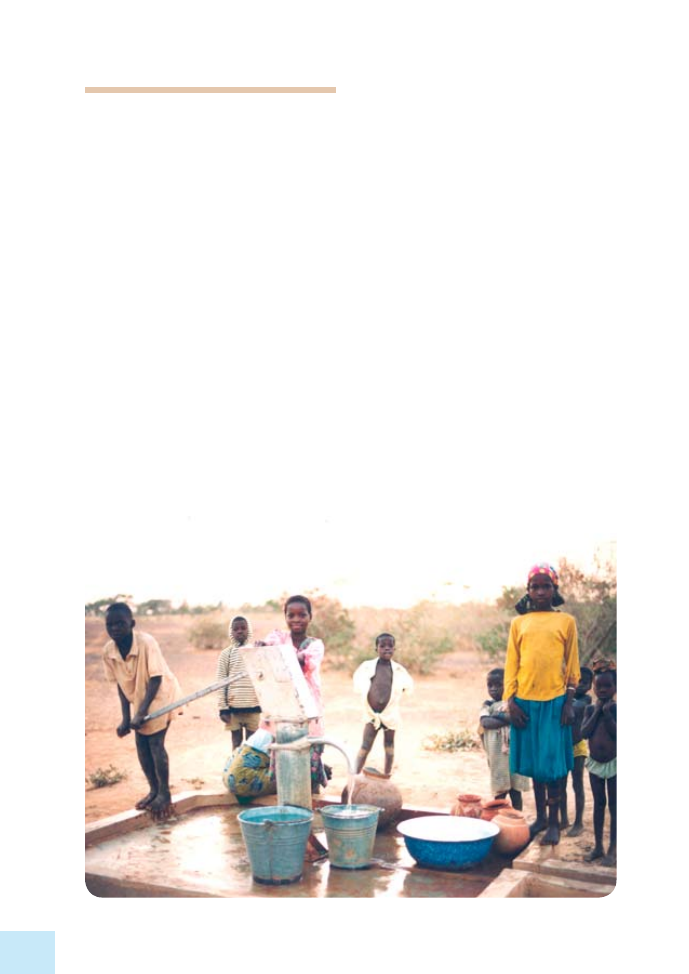ВУЗ: Не указан
Категория: Не указан
Дисциплина: Не указана
Добавлен: 07.04.2021
Просмотров: 626
Скачиваний: 1
49
49
Europe in 12 lessons
In economic, trade and monetary terms,
the European Union has become a major
world power. However, some have described
the EU as an economic giant but a politi-
cal dwarf. This is an exaggeration. It has
considerable influence within international
organisations such as the World Trade
Organisation (WTO) and the specialised
bodies of the United Nations (UN), and at
world summits on the environment and de-
velopment.
Nevertheless, it is true that the EU and its
members have a long way to go, in diplo-
matic and political terms, before they can
speak with one voice on major world issues
like peace and stability, relations with the
United States, terrorism, the Middle East and
the role of the UN Security Council. What
is more, the cornerstone of national sover-
eignty, namely military defence systems, re-
main in the hands of national governments,
whose ties are those forged within alliances
such as NATO.
I. An embryonic common
defence policy
The common foreign and security policy
(CFSP) and the European security and
defence policy (ESDP), introduced by the
Treaties of Maastricht (992), Amsterdam
(99) and Nice (200), define the EU’s
main tasks in the area of defence. To carry
out these tasks, the EU has developed its
“second pillar”, the policy domain in which
action is decided by intergovernmental
agreement and in which the Commission
and the Parliament play only a minor role.
Decisions in this domain are taken by con-
sensus, although individual states are al-
lowed to abstain.
a. The political and strategic
landscape in 2006
More than half a century of Cold War has
ended – Russia has a new orientation and
the former communist countries has joined
NATO and the EU almost simultaneously.
The continent of Europe is coming to-
gether peacefully, and European countries
are working together to fight international
crime, people trafficking, illegal immigra-
tion and money laundering.
The enlarged EU has established a partner-
ship structure with its neighbours, some
of whom have medium-term prospects of
joining the European Union.
The United States has accepted that, for mil-
itary action in which the Americans are not
involved, Europe can use some of NATO’s
logistical capacity such as its intelligence,
communications, command facilities and
transport capabilities.
The terrorist violence that has scarred the
world since the September 200 at-
tacks on New York and Washington and the
bombings in Madrid in 2004 and London
in 200 has profoundly altered the strate-
gic landscape. European countries have to
work more closely together to uncover in-
formation that will help prevent terrorists
and their backers from carrying out attacks.
Cooperation with the United States and all
• The EU has more influence on the world stage when it speaks with
a single voice in international affairs. Trade negotiations
are a good example of this.
• In the area of defence, each country remains sovereign, whether
a member of NATO or neutral. However, the EU member states
are developing military cooperation for peacekeeping missions.
• For reasons of history and geographic proximity, the southern
Mediterranean and Africa are areas to which the EU gives close
attention (development aid policies, trade preferences, food aid
and human rights).

0
0
countries that support democracy and hu-
man rights now goes beyond the framework
of traditional defensive alliances.
b. Tangible achievements
for security and defence
Under the Amsterdam Treaty, Javier Solana
was appointed the EU’s first High Rep-
resentative for the Common Foreign and
Security Policy (CFSP) in 999.
EU member states have set a specific goal
as part of the task of establishing a Euro-
pean security and defence policy. This is to
be able to deploy a rapid reaction force with
naval and air support and sustain it for one
year. This rapid reaction force will not yet
be a real European army. Instead it will be
made up of contingents from the existing
national armed forces.
However, following the establishment of
a Political and Security Committee (PSC),
a European Union Military Committee
(EUMC) and a European Union Military
Staff (EUMS), under the authority of the
Council and located in Brussels, the Union
already has a political and military tool for
carrying out the missions that it has set for
itself: humanitarian missions outside Eu-
rope, peacekeeping operations and other
crisis-management tasks.
As military technology becomes ever more
sophisticated and expensive, EU govern-
ments are finding it increasingly necessary
to work together on arms manufacture.
Moreover, if their armed forces are to carry
out joint missions, their systems must be in-
teroperable and their equipment sufficiently
standardised. The European Council in Thes-
saloniki decided, in 200, to establish a
European Defence Agency.
Since 200, the EU has undertaken a series
of peacekeeping and crisis management
missions. The most important of these has
been in Bosnia and Herzegovina where a
European Union military force (EUFOR) of
000 troops replaced NATO peacekeeping
forces in December 2004.
Helping out in tough times – EU soldiers help restore peace in the Congo.
© EC

Europe in 12 lessons
II. A trade policy
that is open to the world
The European Union supports the rules-
based system of the World Trade Organisa-
tion (WTO), which provides a degree of legal
certainty and transparency in the conduct of
international trade. The WTO sets conditions
under which its members can defend them-
selves against unfair practices like dumping
(selling below cost) through which exporters
compete against their rivals. It also provides
a procedure for settling disputes that arise
between two or more trading partners.
The EU’s trade policy is closely linked to its
development policy. Under its general sys-
tem of preferences (GSP), the EU has grant-
ed duty-free or cut-rate preferential access
to its market for most of the imports from
developing countries and economies in tran-
sition. It goes even further for the world’s
49 poorest countries. All of their exports,
with the sole exception of arms, enjoy duty-
free entry to the EU market under a pro-
gramme launched in 200.
The EU does not, however, have specific
trade agreements with its major trading
partners among the developed countries
like the United States and Japan. Here,
trade relations are handled through the
WTO mechanisms. The United States and
the European Union are seeking to develop
relations founded on equality and partner-
ship. However, EU countries are not always
in agreement on the type of diplomatic, po-
litical and military ties to establish with the
United States.
The European Union is increasing its trade
with the emerging powers in other parts of
the world, from China and India to Central
and South America. Trade agreements with
these countries also involve technical and
cultural cooperation.
Wine is one the EU’s main exports to its biggest trade partner, the United States.
© Reuters

2
2
III. Relations between the EU and
the Mediterranean countries
Given their geographical proximity, histori-
cal and cultural ties, and current and fu-
ture migration flows, the countries on the
southern shores of the Mediterranean are
partners of prime importance. This is why
the EU has traditionally chosen to pursue
a policy of regional integration.
In November 99, the EU laid the foun-
dations for a new Euro-Mediterranean
partnership at the Barcelona Conference,
which was attended by all the EU member
states and the Mediteranean countries
(except for Albania, Libya and the countries
of former Yugoslavia). This conference made
it possible to trace the outline of a new part-
nership involving:
• political dialogue between the partici-
pating countries and a security partnership
based, in particular, on mechanisms for
arms control and the peaceful resolution of
conflicts;
• stepping up economic and trading rela-
tions between the two regions: the key to
this is the creation of a Euro-Mediterranean
free trade area by 200;
• partnership in social and cultural fields.
The EU granted financial assistance to the
tune of
€
. billion to the Mediterranean
countries in 2000–0. In the budget period
200–, a European Neighbourhood and
Partnership Instrument (ENPI) follows on
from and merges into one the previously
separate support programme for the Medi-
terranean countries and its other neighbours
among the successor states of the former
Soviet Union.
Ensuring everyone has access to clean water is an EU priority.
© EC
Europe in 12 lessons
IV. Africa
Relations between Europe and sub-Saharan
Africa go back a long way. Under the Treaty
of Rome in 9, the then colonies and over-
seas territories of member states became as-
sociates of the Community. Decolonisation,
which began in the early 90s, turned this
link into a different kind of association, one
between sovereign countries.
The
Cotonou Agreement,
signed in 2000
in Cotonou, the capital of Benin, marked a
new stage in the EU’s development policy.
This agreement between the European Un-
ion and the African, Caribbean and Pacific
(ACP) countries is the most ambitious and
far-reaching trade and aid agreement ever
concluded between developed and develop-
ing countries. It followed on from the Lomé
Convention, which was signed in 9 in
Lomé, the capital of Togo, and subsequently
updated at regular intervals.
The basic aim of this wide-ranging trade
and aid agreement remains the same as
that of the Lomé Convention: ‘to promote
and expedite the economic, cultural and
social development of the ACP states and
to consolidate and diversify their relations
[with the European Union and its member
states] in a spirit of solidarity and mutual
interest’.
The new agreement goes significantly fur-
ther than earlier agreements, since it has
moved from trade relations based on market
access to trade relations in a wider sense. It
also introduces new procedures for dealing
with human rights abuses.
The European Union has granted special
trading concessions to the least developed
countries, 9 of which are signatories to the
Cotonou Agreement. Since 200, they have
been able to export practically any type of
product to the EU, duty free. The European
Development Fund finances the ACP sup-
port programmes, paying out between two
and three billion euro a year.